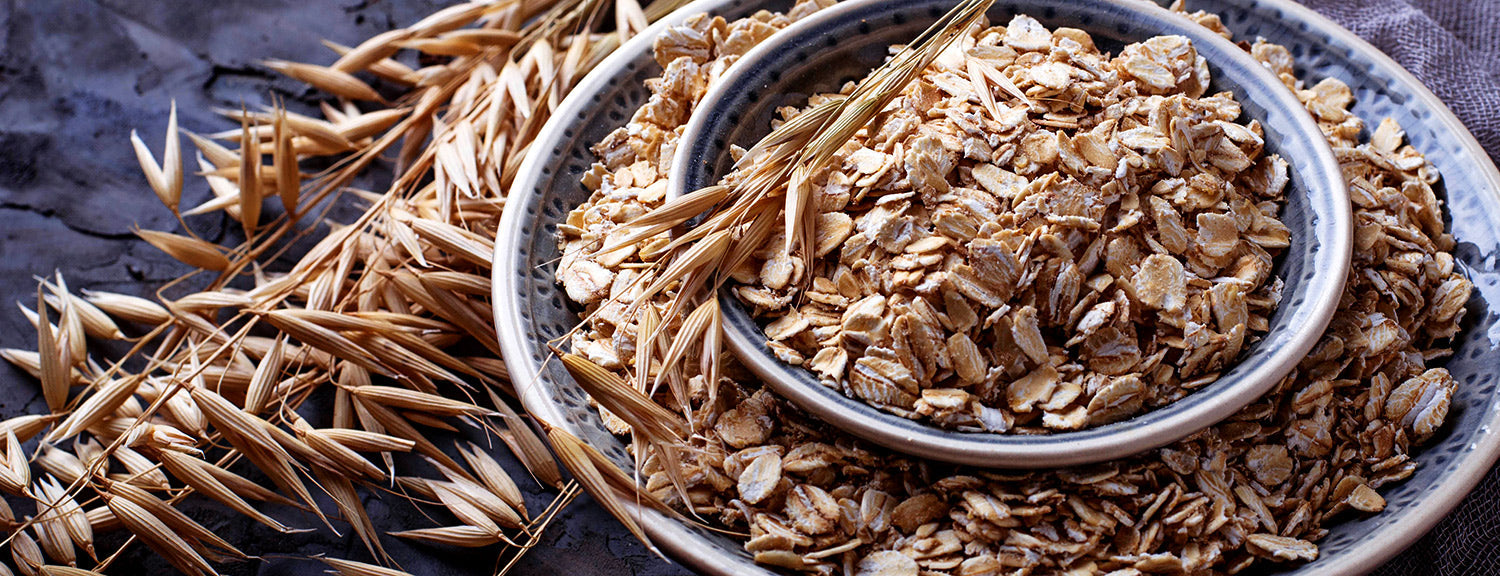Your basket is empty

Why Is My Dog Scooting? Common Causes and How Diet Can Help
May 09, 2025 4 min read
If your dog has ever dragged their bottom across the floor or left behind a strong fishy odour, it’s likely due to a problem with their anal glands. Although it might seem embarrassing, this is actually a very frequent issue in dogs and can affect even otherwise healthy pets. According to a 2021 study published in Veterinary Record, more than 4% of dogs seen by UK vets had some form of anal sac disorder, making it more common than many owners realise.
***
What are anal glands?
These small glands, located on either side of the dog’s anus, release a distinct oily fluid used primarily for scent marking. Normally, when a dog passes a well-formed stool, the pressure helps empty these glands. But when a dog’s stools are too soft or too small, or if the ducts become blocked or inflamed, the fluid can’t drain properly. This can lead to discomfort, swelling, or even infection.
Common indicators that your dog may be experiencing anal gland issues include dragging their rear end, licking or biting at the area excessively, or yelping when trying to pass stool. You might also notice a persistent fishy smell or visible swelling near the anus. In severe cases, an abscess may develop and burst, which is both painful and messy.

***
Manual expression
Veterinarians and groomers often deal with these problems by manually emptying the glands. While this can provide short-term relief, frequent manual expression may actually worsen the problem. Regular manipulation can irritate the tissue, cause inflammation, and make it even more difficult for the glands to empty on their own in the future. This method is sometimes necessary, but it’s not an ideal long-term fix. Instead, the focus should be on understanding why the glands aren’t functioning properly.
***
Why anal glands don't empty properly
One of the most common causes is the consistency of your dog’s stool. Well-formed, bulky waste puts pressure on the glands during defecation, which helps them empty naturally. Dogs with ongoing diarrhoea or soft stools often don’t have this natural expression mechanism working for them.
Certain breeds are more prone to anal gland issues too. Small dogs like Cavalier King Charles Spaniels, Cocker Spaniels, and Bichon Frises, as well as flat-faced breeds like Shih Tzus and Bulldogs, are more likely to experience problems. A study from the Royal Veterinary College found that brachycephalic breeds were 2.6 times more likely to develop anal sac disorders compared to long-nosed dogs.
Skin conditions can also be a factor. Dogs with chronic skin infections or oily coats may produce thicker anal gland secretions that are more difficult to release.
Similarly, obesity can put pressure on the glands or interfere with the muscles responsible for expressing them, especially in overweight dogs with reduced muscle tone in the pelvic area.
***
The role of diet
So, what can you do to help? Nutrition plays a huge role. Dietary fibre is especially important. There are two key types: insoluble fibre, which increases stool bulk, and soluble fibre, which helps stabilise the consistency of the stool. Ideally, a dog’s diet should contain both. One of the most effective natural remedies is canned or cooked pumpkin, which contains both types and helps regulate bowel movements.
If your dog eats commercial kibble, chances are their fibre intake is lower than optimal. Many highly processed dry foods are designed to reduce waste, which may reduce stool bulk and impair anal gland function. Look for foods with at least 5–8% crude fibre and check for ingredients like flaxseed, carrots, pumpkin, and leafy vegetables. Switching to a minimally processed diet—either raw or gently cooked—can also make a big difference in stool quality and gland health.
In addition to fibre, certain foods and nutrients support healthy anal glands in other ways. Bone broth, for example, contains glycine, which helps with detoxification and gut health. You can mix a small amount of broth with psyllium husk to create a jelly-like mixture that helps form more solid stools.
Anti-inflammatory ingredients like omega-3 fatty acids from salmon oil, sardines, anchovies, or flaxseed oil can reduce irritation in the gut and help maintain healthy glands. There is solid evidence that omega-3s support digestive and skin health in dogs with inflammatory conditions.
Digestive enzymes, particularly bromelain from pineapples, are also useful for dogs with sensitive stomachs or inconsistent stools. Bromelain has anti-inflammatory properties and helps break down proteins, improving nutrient absorption and reducing stress on the gut.
A strong and balanced microbiome supports consistent bowel movements and immune function, which also impacts anal gland health. If your dog struggles with chronic loose stools, a microbiome test can reveal imbalances and suggest specific probiotics. If testing isn’t possible, adding small amounts of natural probiotics like kefir or sauerkraut to their meals may help. Alternatively, a canine-specific probiotic supplement can be used, although results may vary without personalised data.
***
Fibre & taurine deficiency
Some pet owners worry that adding too much fibre can lead to nutrient imbalances like taurine deficiency. While this is a legitimate concern with poorly formulated diets full of low-quality fillers like beet pulp, there is no evidence that small amounts of whole food fibre from ingredients like pumpkin, carrots, or leafy greens cause problems, especially when the diet includes adequate animal-based protein. A well-balanced, fresh diet tends to support gut health and nutrient absorption far better than ultra-processed options.
***
Final thoughts
If you’re considering making changes to your dog’s diet, do so gradually. Increase fibre over several days to prevent bloating, gas, or diarrhoea. Start small—perhaps half a teaspoon of psyllium for a small dog—and observe changes in stool firmness. Make sure your dog stays hydrated, especially if you’re increasing fibre intake. If your dog eats dry kibble, you might want to add water or broth to their meals to prevent constipation. Monitor their behaviour and bowel movements. Is the scooting decreasing? Are the stools becoming more consistent? These are signs that the dietary adjustments are working.
Dealing with anal gland problems can be frustrating, but the good news is that many dogs improve with the right nutrition and a bit of patience. Instead of just reacting when the symptoms flare up, take a proactive approach—look at your dog’s diet, their body condition, their gut health. Often, a few small changes can result in a happier, more comfortable pet. So the next time your dog starts scooting, pause and think: could this be a sign that something’s missing from their bowl?
Also in Pet Advice

Should You Add Water to Your Dog’s Kibble? Here’s What the Science Says
August 14, 2025 7 min read
Should you add water to your dog’s kibble? Discover the science-backed pros, cons, and better alternatives like bone broth and fresh food to improve hydration, digestion, and overall canine health...

DIY Frozen Dog Treats Your Pup Will Love
June 27, 2025 4 min read
Summer heat can be dangerous for dogs, making hydration more important than ever. Learn how to spot signs of dehydration, boost your pup’s water intake, and create fun, frozen recipes to keep them happy and healthy all season long.

Are oats bad for dogs?
January 23, 2025 3 min read
For centuries, oats have been a dietary staple for humans, celebrated for their high fibre content and essential nutrients. But what about our canine companions? Can dogs enjoy the benefits of oats as well, or should this grain be avoided altogether?
